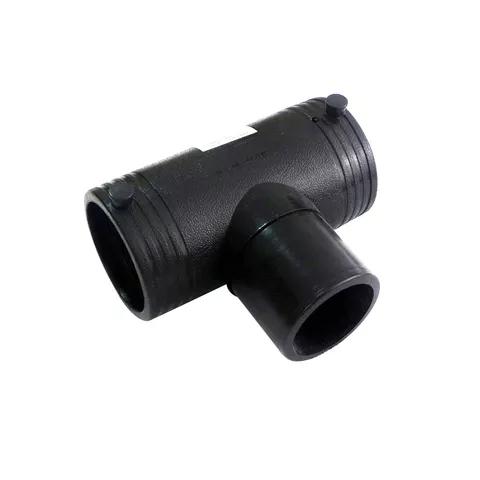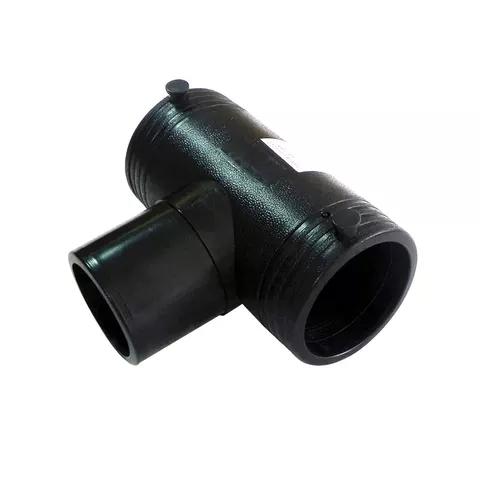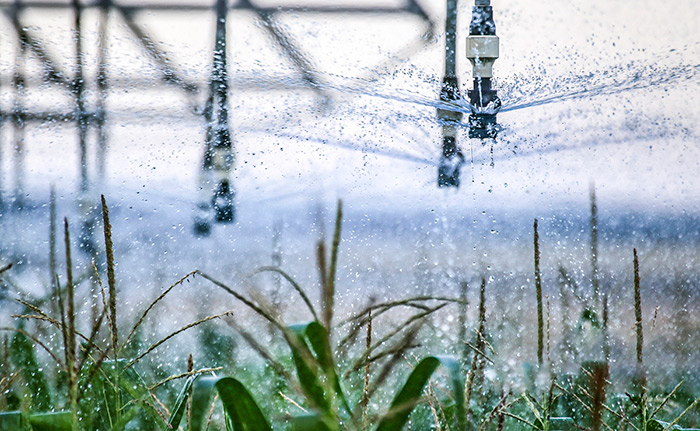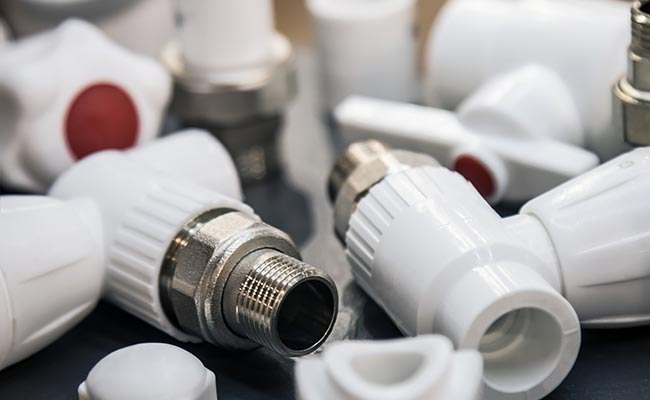
HDPE 전기융합 티이 기술은 현대 사회 기반 시설에서 두각을 나타냅니다. PE100 수지를 사용하고 ASTM F1056 및 ISO 4427과 같은 엄격한 기준을 충족하여 견고하고 누수 방지 기능이 뛰어난 접합부를 제공합니다. 상수도 및 가스망에서 사용이 증가함에 따라 엔지니어들은 중요한 프로젝트에 이 기술의 신뢰성을 신뢰하고 있습니다.
주요 내용
- HDPE 전기융합 티는 파이프를 녹여 연결함으로써 견고하고 누출 방지 조인트를 만들어 장기적이고 안전한 인프라 연결을 보장합니다.
- 성공적인 설치와 안정적인 성능을 위해서는 적절한 도구를 갖춘 숙련된 작업자를 적절히 준비하고 정렬하는 것이 필수적입니다.
- 이 기술은 부식에 강하고, 유지관리 필요성이 적으며, 시간이 지남에 따라 비용을 절감하는 등 기존의 접합 방법보다 뛰어납니다.
HDPE 전기융합 티: 정의 및 역할
HDPE 전기융합 티란 무엇입니까?
HDPE 전기융착 티는 고밀도 폴리에틸렌(HDPE) 파이프 세 부분을 연결하는 특수 파이프 피팅입니다. 이 티에는 금속 코일이 내장되어 있습니다. 전류가 이 코일에 흐르면 가열되어 피팅 내부와 파이프 외부가 녹습니다. 녹은 플라스틱은 냉각되어 강력하고 누출 방지 접합을 형성합니다. 이 과정을 전기융착이라고 합니다.
HDPE 전기융합 티는 파이프 자체보다 더 강한 접합부를 만들어내기 때문에 많은 사람들이 선택합니다. 이 피팅은 보통 50psi에서 200psi 이상의 고압을 견딜 수 있습니다. 영하의 추위부터 더운 날씨까지 다양한 온도에서 잘 작동합니다. 또한 이 티는 화학 물질에 강하고 물과 반응하지 않아 식수 시스템에도 안전하게 사용할 수 있습니다.미국 토목학회(ASCE)이 기술은 물이 새지 않는 영구적인 접합부를 만드는 데 도움이 되므로 누수가 적고 파이프의 수명이 길어진다고 합니다.
팁:HDPE 전기융합 티는 화염이나 대형 장비가 필요하지 않기 때문에 좁은 공간이나 수리 중에도 설치하기 쉽습니다.
인프라 프로젝트에 적용
HDPE 전기융합 티는 현대 사회 기반 시설에서 중요한 역할을 합니다. 도시와 산업체에서는 상하수도, 가스관, 하수 시스템, 관개 시설 등에 이 티를 사용합니다. Sinopipefactory 가이드에서는 이 티가 견고하고 누수 없는 연결부가 필요한 프로젝트에 적합하다고 설명합니다. 파이프가 오랫동안 사용되어야 하고 혹독한 환경에 노출되는 곳에서도 효과적으로 작동합니다.
- 급수망에서는 이 티를 사용해 누수 걱정 없이 파이프를 분할하거나 연결합니다.
- 가스 회사들은 안전하고 보안적인 지하 연결을 위해 이를 의지합니다.
- 농부들은 이 식물을 관개 시스템에 사용합니다. 이 식물은 화학 물질에 강하고 수십 년 동안 지속되기 때문입니다.
- 산업 공장에서는 혹독한 환경에서도 다양한 유체를 처리하기 위해 이 제품을 선택합니다.
글로벌 전기융합 피팅 시장 보고서에 따르면 HDPE 전기융합 티 피팅에 대한 수요가 지속적으로 증가하고 있습니다. 도시 지역과 산업계는 기존 시스템을 대체하고 새로운 프로젝트를 지원할 수 있는 안정적인 파이프를 필요로 합니다. 이러한 티는 물, 가스 및 기타 유체의 안전하고 효율적인 이동을 보장합니다.
누출 방지 조인트를 위한 HDPE 전기융착 티 설치

준비 및 정렬
누수 방지 접합 작업은 꼼꼼한 준비부터 시작됩니다. 작업자들은 HDPE 파이프 끝부분을 청소하는 것으로 시작합니다. 특수 스크래핑 도구를 사용하여 먼지, 기름때, 그리고 오래된 이물질을 제거합니다. 이 과정을 통해 새 플라스틱이 드러나고, 이는 접합부가 단단히 접합되는 데 도움이 됩니다.
다음은 적절한 정렬입니다. 파이프와 HDPE 전기융합 티는 일직선으로 정렬되어야 합니다. 아주 작은 각도라도 나중에 문제를 일으킬 수 있습니다. 파이프가 정렬되지 않으면 용접이 실패하거나 누출될 수 있습니다. 작업자들은 작업 전에 적합성을 확인합니다.
기타 중요한 단계는 다음과 같습니다.
- 트렌치가 매끄럽고 다져져 있는지 확인하세요. 이렇게 하면 파이프와 부속품이 손상되지 않습니다.
- 파이프의 압력 등급과 크기가 티와 일치하는지 확인합니다.
- 깨끗하고 건조한 도구와 부속품만 사용합니다.
- 날씨를 확인하세요. 온도와 습도는 용접에 영향을 줄 수 있습니다.
숙련된 작업자와 적절한 도구는 큰 차이를 만듭니다. 많은 회사에서는 설치 기사에게 특별 교육을 받고 교정된 장비를 사용하도록 요구합니다. 이러한 조치는 실수를 방지하고 시스템을 안전하게 유지하는 데 도움이 됩니다.
전기융착 용접 공정
용접 공정은 스마트 기술을 사용하여 견고하고 누출 방지 접합부를 만듭니다. 작업자는 전기융착 제어 장치(ECU)를 HDPE 전기융착 티에 연결합니다. ECU는 피팅 내부의 금속 코일을 통해 일정량의 전기를 공급합니다. 이 전기는 파이프와 피팅의 플라스틱을 가열합니다.
녹은 플라스틱은 서로 섞여 하나의 단단한 조각을 형성합니다. ECU는 시간과 온도를 제어하여 열이 고르게 분산되도록 합니다. 이를 통해 접합부가 튼튼하고 안정적으로 작동합니다.
일반적으로 과정은 다음과 같습니다.
- 작업자가 정렬을 두 번 확인합니다.
- 그들은 ECU를 연결하고 퓨전 사이클을 시작합니다.
- ECU는 피팅의 크기와 유형에 따라 설정된 시간 동안 실행됩니다.
- 사이클이 끝나면 누군가가 파이프를 옮기기 전에 관절이 식습니다.
이 방법은 플라스틱 파이프 연구소(Plastics Pipe Institute)와 ISO 4427과 같은 단체의 엄격한 규칙을 따릅니다. 이러한 표준은 모든 접합부가 안전하고 누출이 없는지 확인하는 데 도움이 됩니다.
팁:티와 파이프의 압력 등급을 항상 일치시키세요. 이렇게 하면 전체 시스템을 수년간 튼튼하고 안전하게 유지할 수 있습니다.
검사 및 품질 보증
용접 후, 작업자는 접합부를 점검해야 합니다. 작업자는 여러 가지 방법을 사용하여 모든 것이 완벽한지 확인합니다.
- 고해상도 비디오 검사를 통해 작업자는 파이프 내부를 확인할 수 있습니다. 누출을 유발할 수 있는 균열, 틈새 또는 이물질을 찾아냅니다.
- 압력 테스트는 흔히 사용됩니다. 작업자들은 파이프에 물이나 공기를 채운 후 압력 강하를 관찰합니다. 압력이 일정하게 유지되면 연결 부위에 누수가 없는 것입니다.
- 때로는 진공 또는 유량 검사를 실시합니다. 이러한 검사는 연결 부위가 밀봉 상태를 유지하고 물이 원활하게 흐르는지 확인합니다.
- 작업자들은 또한 청소 및 용접 단계를 검토합니다. 모든 단계가 규칙을 준수했는지 확인합니다.
- 숙련된 작업자만 온도 조절식 융합 장비를 사용합니다. 이를 통해 모든 용접이 최고의 기준을 충족할 수 있습니다.
이러한 검사를 통해 HDPE 전기융합 티 접합부가 누출되지 않음을 확실히 입증할 수 있습니다. 철저한 검사와 품질 관리를 통해 시스템은 수십 년 동안 사용할 수 있습니다.
HDPE 전기융합 티 vs. 기존 접합 방법
누출 방지의 장점
기계적 커플링이나 용제 용접과 같은 전통적인 파이프 접합 방식은 작은 틈이나 약한 부분을 남기는 경우가 많습니다. 이러한 부분에서 시간이 지남에 따라 물이나 가스가 누출될 수 있습니다. 이러한 오래된 방법을 사용하는 사람들은 때때로 누수 여부를 반복적으로 확인해야 합니다.
HDPE 전기융합 티는 판도를 바꿉니다. 열을 사용하여 파이프를 녹이고 접합합니다. 이 과정을 통해 하나의 견고한 조각이 만들어집니다. 이음새나 접착면이 없어 파손될 염려가 없습니다. 많은 엔지니어들은 이 방법이 누수 위험을 거의 없앤다고 말합니다.
메모:누수 방지 시스템은 물 손실이 적고, 수리가 적으며, 가스나 물이 더 안전하게 공급된다는 것을 의미합니다.
내구성 및 유지 관리 이점
기존 방식으로 연결된 파이프는 더 빨리 마모될 수 있습니다. 금속 부품이 녹슬거나 접착제가 분해될 수 있습니다. 이러한 문제로 인해 수리 비용이 더 많이 발생하고 비용이 더 많이 듭니다.
HDPE 전기융합 티는 부식과 화학 물질에 대한 내성이 뛰어나다는 점이 특징입니다. 혹독한 환경에 노출되어도 녹슬거나 약해지지 않습니다. 접합부는 파이프 자체만큼 튼튼합니다. 많은 프로젝트에서 이러한 접합부가 수십 년 동안 문제없이 유지되는 것을 확인할 수 있습니다.
- 유지관리가 적다는 것은 서비스 요청도 적다는 것을 의미합니다.
- 오래 지속되는 조인트는 도시와 회사가 비용을 절감하는 데 도움이 됩니다.
- 작업자는 이러한 티를 신속하게 설치할 수 있으므로 프로젝트가 일정에 맞게 진행됩니다.
사람들은 이 기술을 중요한 작업에 신뢰하는데, 그 이유는 이 기술이 매년 시스템을 원활하게 운영할 수 있게 해주기 때문입니다.
HDPE 전기융합 티는 누수 방지 접합부와 뛰어난 내구성을 자랑합니다. 최근 연구에 따르면 50년 이상의 수명과 뛰어난 내화학성을 갖춰 혹독한 환경에서도 견딜 수 있는 것으로 나타났습니다. 주요 특징들을 확인해 보세요.
| 특징 | 혜택 |
|---|---|
| 유연성 | 지면의 움직임을 처리합니다 |
| 가벼움 | 설치가 간편하고 비용도 절감됩니다 |
| 관절 강도 | 누출을 방지합니다 |
이 기술을 선택하면 시간이 지남에 따라 수리 횟수가 줄어들고 비용도 낮아집니다.
자주 묻는 질문
HDPE 전기융합 티는 얼마나 오래 지속됩니까?
대부분의 HDPE 전기융합 티는 최대 50년까지 사용할 수 있습니다. 혹독한 환경에서도 누수나 녹 없이 작동합니다.
HDPE 전기융합 티를 설치할 수 있는 사람이 있나요?
숙련된 작업자만 이 티를 설치해야 합니다. 특수 도구와 기술을 사용하면 연결 부위가 튼튼하고 누수 방지 기능을 유지할 수 있습니다.
HDPE 전기융합 티는 식수에 사용해도 안전한가요?
네! 이 티셔츠는 무독성, 무미 소재를 사용했어요. 물을 깨끗하고 안전하게 유지해 주어 모두에게 안전합니다.
게시 시간: 2025년 6월 18일









